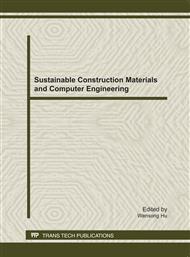p.835
p.842
p.847
p.852
p.858
p.865
p.875
p.882
p.889
Testing and Modeling of Vehicular Hydraulic Braking System with Linear Solenoid Valves
Abstract:
For vehicular hydraulic braking system using linear solenoid valves, an experiment setup is built for test, and the nonlinear dynamic model is developed using a combination of mechanistic and empirical methods. Unknown parameters are identified using least squares. The model can be used for simulation and pressure estimation effectively. In order to use this model in controller design, a simplification is also performed and a polynomial static model is obtained between the pressure rate and the driving signal. Model validations are performed by comparing the simulated and measured curves.
Info:
Periodical:
Pages:
858-864
Citation:
Online since:
September 2011
Authors:
Keywords:
Price:
Сopyright:
© 2012 Trans Tech Publications Ltd. All Rights Reserved
Share:
Citation:


